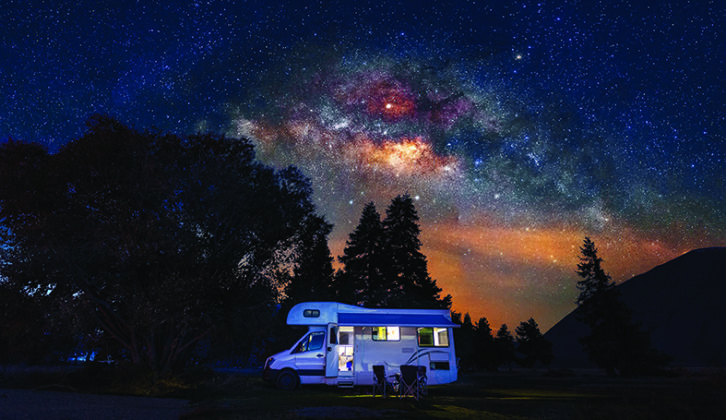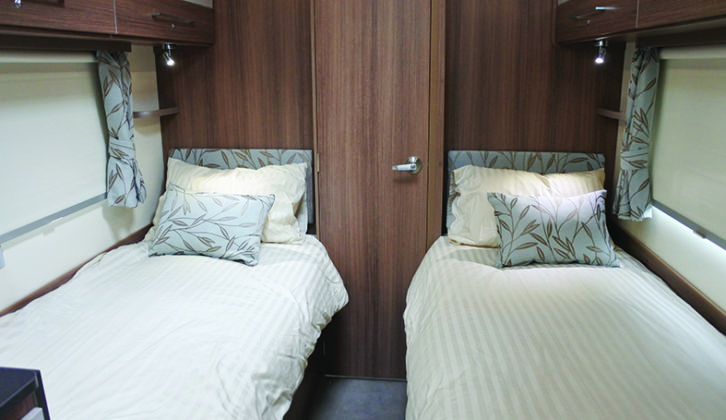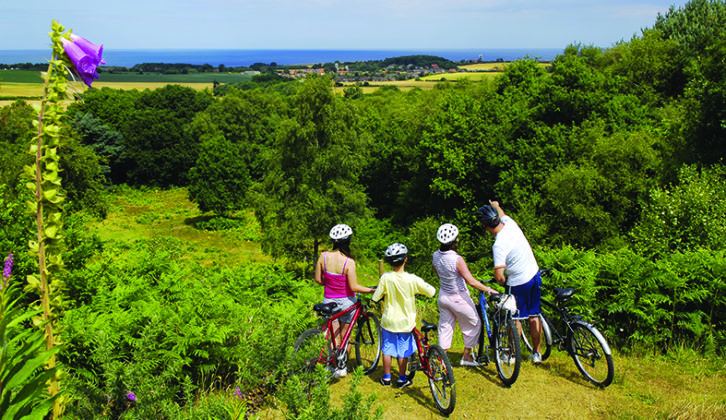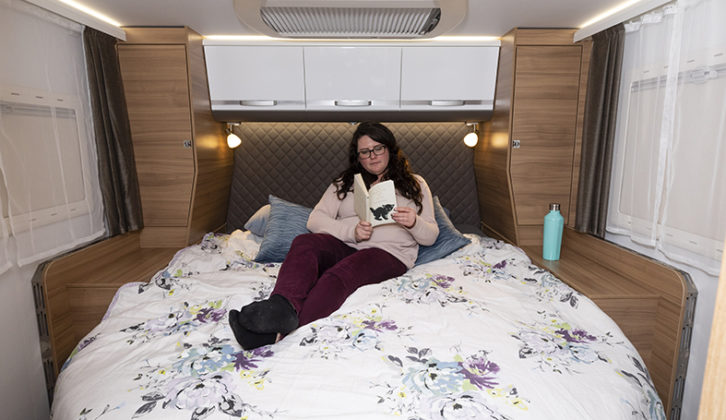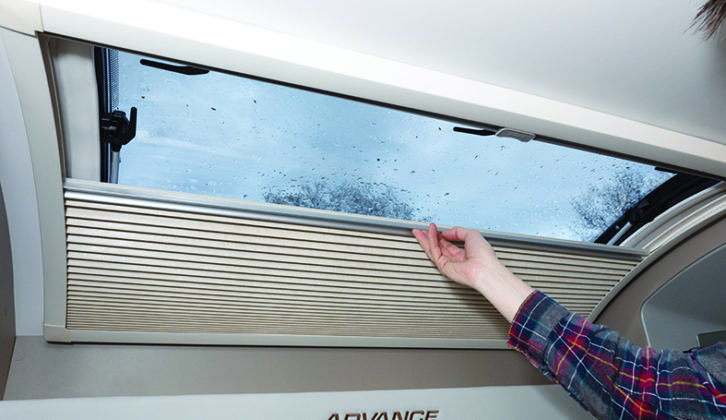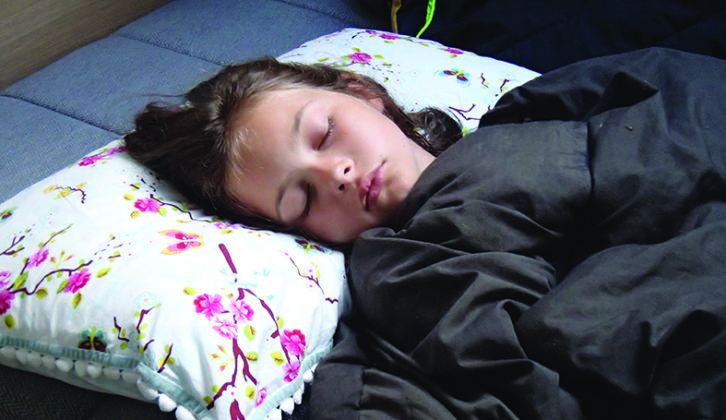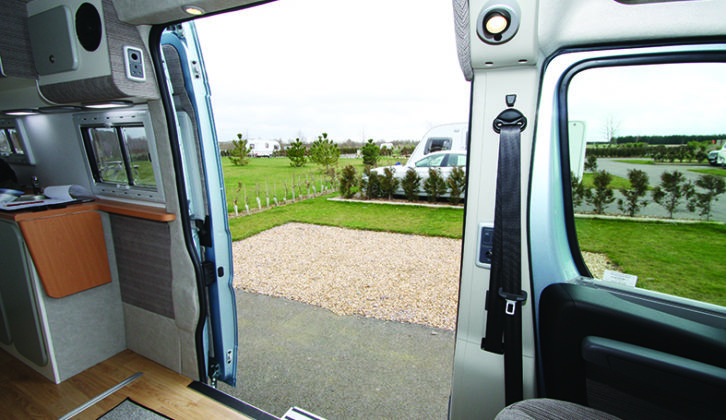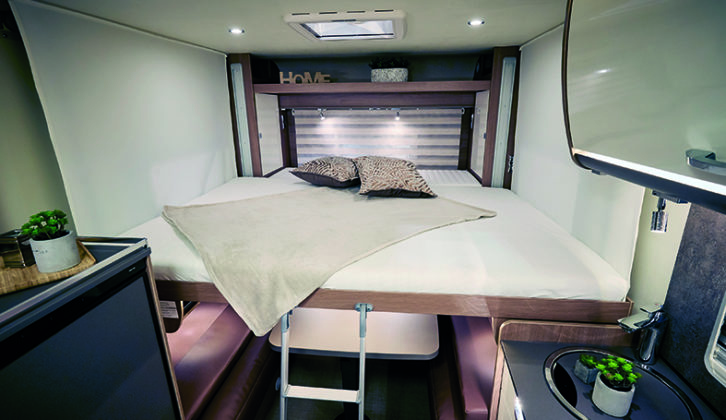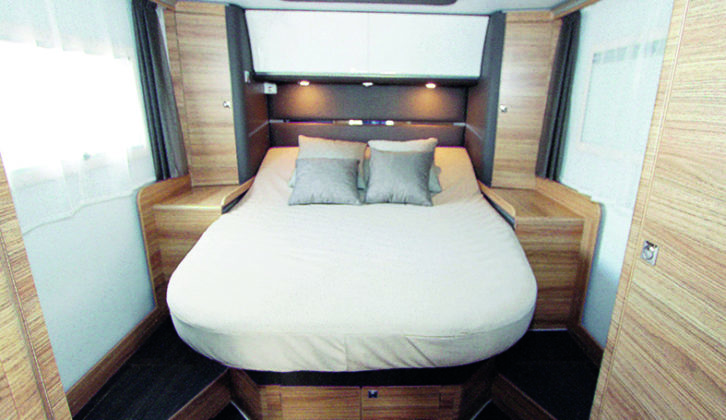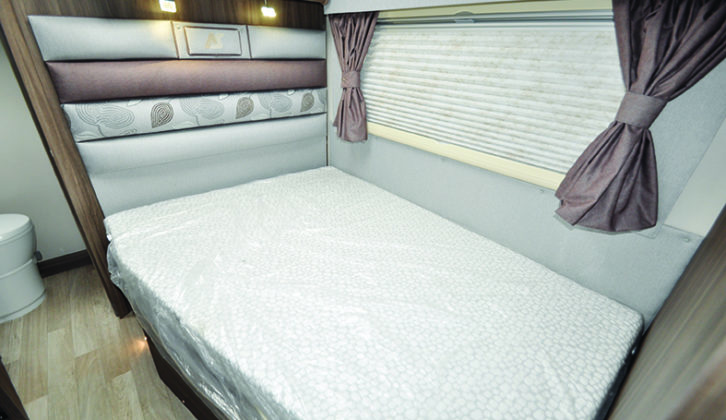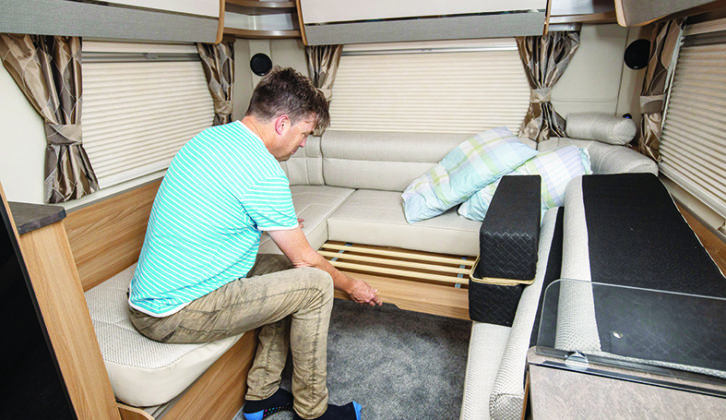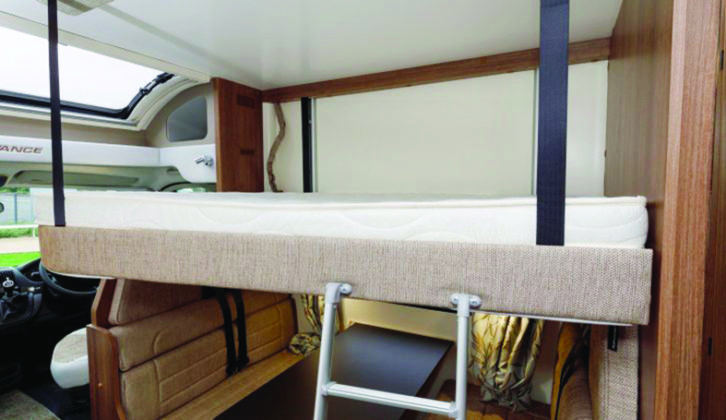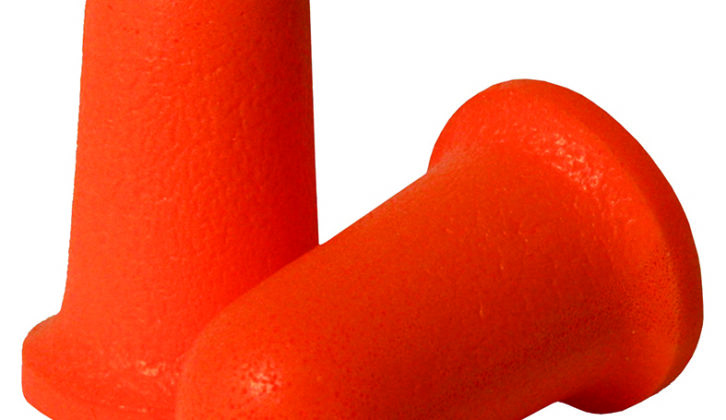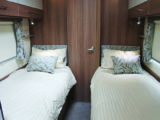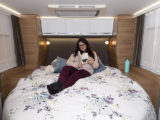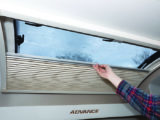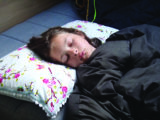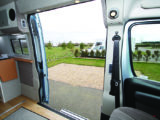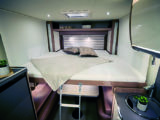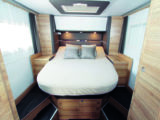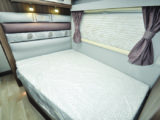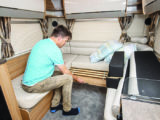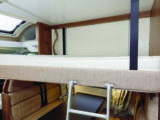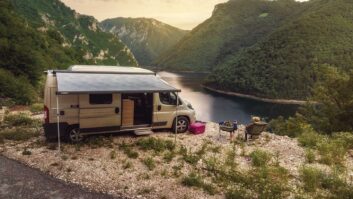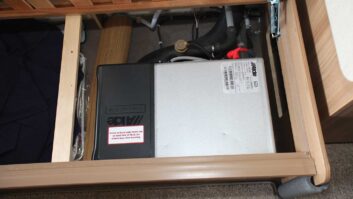Getting a good night’s sleep can make or break a tour. As well as lounging, cooking and washing facilities, one of the major factors (the most important?) in choosing a ‘van should be that sleeping arrangements are well suited to you and your family.
This will include the number of berths, bed types, size of beds and the comfort levels they provide.
This guide outlines all of the things to think about, plus lots of other useful advice to help you get a great night’s sleep in your motorhome.
Let’s start with the four major points you need to consider for establishing really good sleep patterns.
Create a great space for sleeping
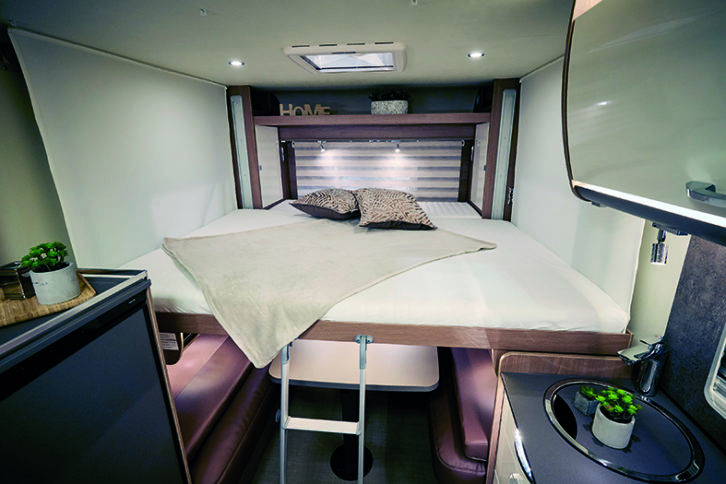
- Invest in a high-quality mattress and pillows. This is relatively easy, although not always cheap for motororcaravnners. But what value do you put on a night of sound sleep, and how much better that will make you feel the following day?
- Choose quality bedding, with the right tog factor for the season, so that once you are asleep, you can be confident of remaining comfortable.
- Temperature is crucial to having sound, uninterrupted sleep. Research suggests that 65°F/18.3°C is the ideal temperature for good sleep… but find what works for you. Motorhome interiors are ideal for closely monitoring and maintaining the internal temperatures, whether your ‘van is fitted with a blown-air or a wet heating system.
- Too much light can disrupt your sleep and your circadian rhythm (the body’s sleep cycle). Modern vehicles are a good environment for creating a total black-out scenario.
- Be sure to establish a quiet, peaceful ambience. After about 10pm most UK campsites will quieten down, creating a good sleeping environment. European campsites can often be noisier until much later, because people abroad tend to eat and socialise further into the night than we might do.
- In addition, consider the noises in your vehicle (pumps, boilers and so on), and perhaps pack some earplugs.
- Pleasant aromas, such as lavender, are proven to help people sleep, and companies create scents specifically for the purpose. We’d recommend choosing a diffuser rather than a lit candle (from a safety perspective).
- Check out Neom or John Lewis for a range of soporific scents in reed diffuser form, or keep an eye on Aldi or Lidl, who also sell them at certain times of the year.
Plan a sleep schedule
- Transitioning from work/home schedules to holiday ones can throw your sleep way out of kilter. Ideally, this transition should be a pleasantly gradual process.
- Sleep scientists reckon you should have a target wake-up/get-up time and work back from that to discover your ideal bedtime, so that you can achieve your recommended amount of sleep each night. They also say we should give ourselves extra time to wind down between the evening activities and actually going to bed.
- Too much napping during the day can cause you problems with getting a proper sleep at night-time. Experts say that a 20-minute post-lunch nap is the perfect solution.
Create a pre-sleep routine
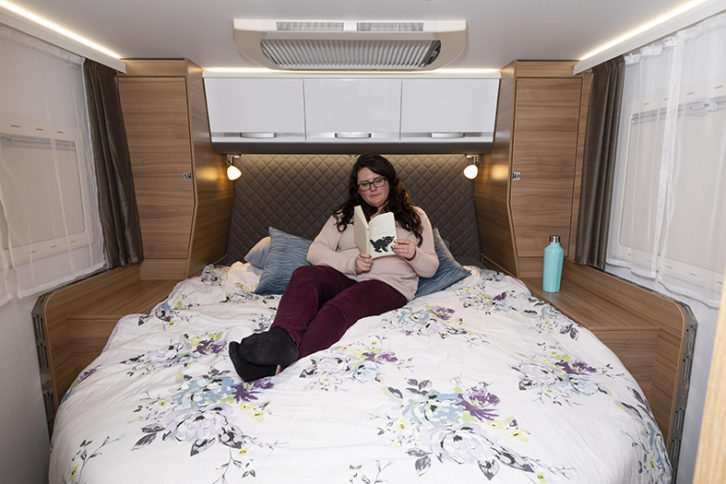
- Poor pre-sleeping habits are one of the biggest disruptors of good sleep.
- Aim to create a consistent pre-sleep routine, which will signal to your body that you’re now approaching bedtime, allowing it to adjust.
- Using phones, tablets and laptops is not a good way to prepare for sleep, because the light output minimises the production of the sleep hormone melatonin. Disconnect from all devices at least 30 minutes before bedtime.
- In addition , aim to wind down for at least 30 minutes before trying to sleep. Experts suggest that you could do a few stretching or relaxation exercises, but listening to soothing music (together or with headphones) or reading a book is probably a more realistic, achievable proposition for most of us.
- As you do these things, lower the lighting – this is known to boost the production of melatonin. Modern motorhomes are ideal for this, with a plethora of lighting options and levels.
Plan your day for better sleep
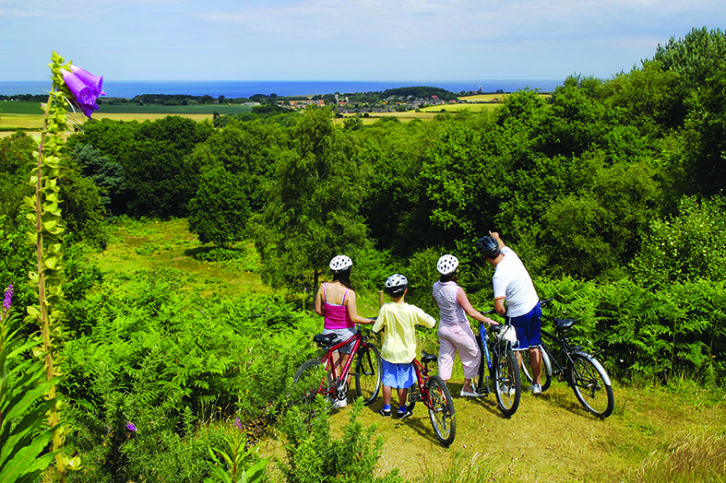
- Exposing yourself to sunlight or natural light during the day is thought to help regulate and normalise your body’s circadian rhythm, so that you will be able to sleep better at night.
- Eating a large, fatty or spicy meal too close to bedtime can disrupt your sleep. If you feel you need an evening snack, aim to eat something light, such as a bowl of cereal.
- Exercise is one of the best ways to promote good sleep. Changes in energy output and body temperature throughout the day are known to promote sleep. Cycling, swimming and brisk walking are three great ways to achieve this, but avoid doing them too close to bedtime.
- Caffeinated drinks, such as tea, coffee and cola, are great for a burst of energy, but can seriously disrupt your sleep patterns. Monitor your intake, avoid consuming them close to bedtime and consider the alternative of drinking decaffeinated versions later in the day,
- Avoid hot chocolate and other sugary drinks just before bedtime, because the resulting sugar rush is likely to undo any potential sleep-enhancing effects.
- Smoking is proven to be a factor in poor sleep patterns, making it harder to drop off and causing broken sleep.
- An alcoholic nightcap might well be perceived to work for some people, but alcohol is scientifically proven to lower sleep quality for most of us. If you find yourself suffering from consistently poor sleep, you could try avoiding alcohol before bedtime.
Things to think about
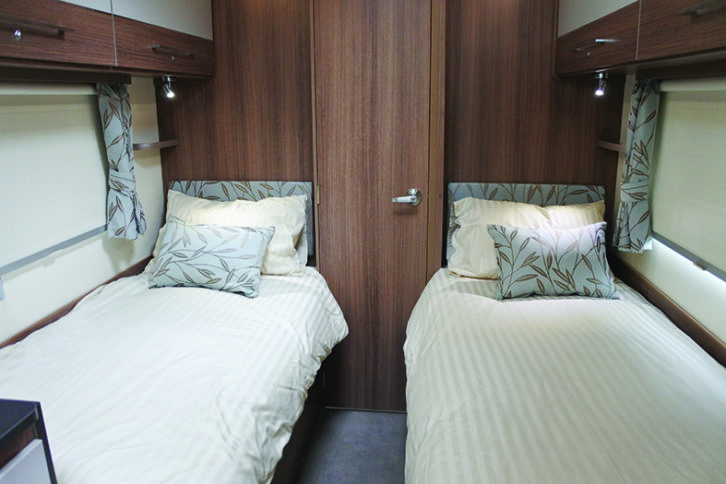
Twin-bed motorhome layouts have become increasingly popular for couples in recent years. It seems that as you get older, a good night’s sleep rises up the priority list.
In addition, with more frequent visits to the toilet, or health conditions such as restless leg syndrome, more motorcaravanners will find their sleep affected. Not distrurbing each other during the night really is an essential part of a harmonious lifestyle!
Twin-bed motorhomes are the ideal solution in this situation, especially because the toilet will be located close to the bedroom in most floorpans that provide a rear washroom.
Sleeping with your head a few inches above the heater unit or water pump is not the best idea, because they can cut in throughout the night. I’f you’re a light sleeper, choose a layout where your bed is positioned well away from the ancillaries, which are sometimes noisy.
In the daytime, these sounds are masked by ambient noise, but in the quiet early hours, they can become much more intrusive. This is mainly a problem when you are using the make-up double bed at the front, where the heating system is located under the sofa base.
One thing that motorhomes are particularly great for is thieir black-out potential, making it easy to create a pitch-black environment, even when it’s still light outside.
Sleeping in complete darkness has been proven to be much better for you, because it increases the production of melatonin, which helps people to fall alseep faster and better.
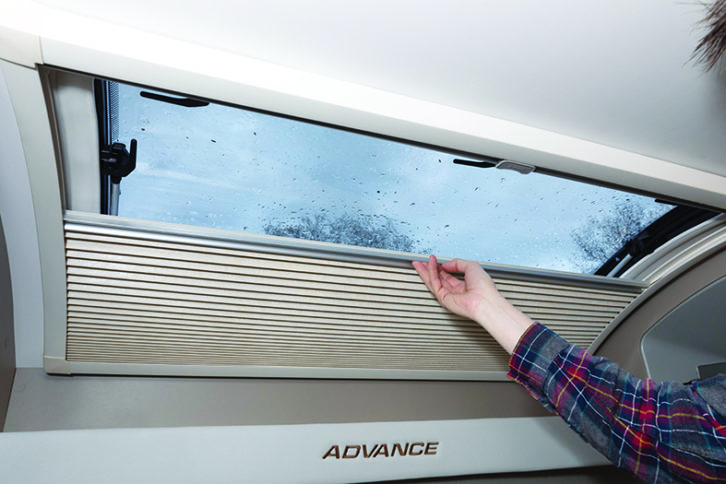
The pull-down blinds on windows, and those that you can pull across roof vents, are simply brilliant for blocking out almost all of the daylight entering the motorhome’s bedroom, making this one of the darkest places to sleep that you’ll find. This level of darkness might also help to delay your waking in the mornings, providing you with some vital extra hours of sleep.
If your motorhome’s cab has pull-across internal blinds, you might want to consider external screen covers to help block out more light.
The level of illumination from some motorhome control panels and appliance LEDs can be very bright – the interior can be bathed in a (usually) blue or orange glow, and once you’ve noticed this, it’s hard to ignore.
Take some opaque tape or devise some other method to cover the fridge and control panel lights temporarily, keeping the entire front bedroom area dark during the night.
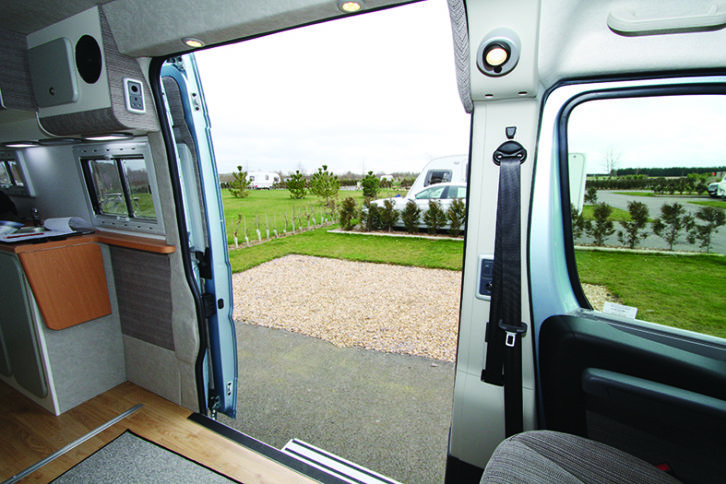
In hot weather, motorhome interiors can become uncomfortably warm, making it more difficult to sleep at night. Try to create a cooling airflow by using a portable fan, or leaving one of the windows slightly ajar.
If security issues are a concern, you could open a roofltight instead, although the cooling draught may not be as effective. Try to cool the ‘van as much as possible before bedtime.
Once in a while, you’ll find you’re pitched next to noisy site neighbours. A polite “There are people trying to sleep here!” might work, but pack those earplugs, just in case.
As children grow up, they get bigger, heavier and noisier. In close proximity, earplugs could be the best option!
There also comes a time when the motorhome bunks just aren’t big enough and every time the kids turn over, they send a thud or thump through the whole interior. That’s really the time to consider a bigger vehicle.
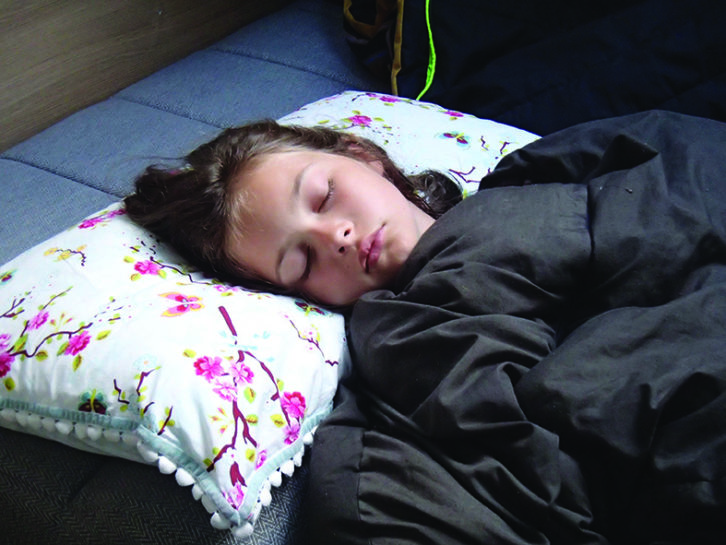
We’ve stayed at the occasional campsite close to a busy road. Check your proposed site on Google Earth to see how close it is to noisy highways, rail lines or even flight paths – especially if you’re going to be there for an extended period. That website will also help you to track down the best-placed pitches on site.
External noise and internal heat is the worst combination for sleeping, because you can’t have the windows open due to the noise, so heat builds up inside. Mosquitoes can have a similar effect. Once again, those small, cheap, foam earplugs might be your saviour.
Make-up lounge beds require a little work to construct each evening, and care must be taken to ensure that the bolstered base sections (sofa base cushions and backs, during the day) are arranged the right way around, or you’ll find you have an uncomfortable bump sticking into your back.
Many motorcaravanners have found that foam toppers are a great way to eliminate any bumps or ridges in the sleeping surface of make-up beds.These can be quickly rolled out over the configured base cushions, before the sheet is fitted. While comfortable, this requires no small amount of effort each evening and, of course, the topper needs to be stored somewhere handy. It might also remove another 5kg from your usable payload.
The comfier your mattress is, the heavier it’s likely to be! This isn’t usually a problem, unless you need to have frequent access to the space underneath the bed – lifting a heavy hinged base and mattress can be quite an awkward chore.
Many higher-spec motorhomes are fitted with spring-assisted systems to lighten the ‘lift’ and hold the bed base in the raised position while you grab the items. Check this out on any new vehicle before you commit to buying, if it’s important to you.
Some motorcaravanners prefer to change the mattress when they buy a pre-owned ‘van, especially if it’s an older, well–used model.
Damp motorhomes are not healthy places to sleep, because mould and spores will often circulate in the air.
Inhaling these particles can inflame your airways and cause congestion, chest tightness, wheezing, throat irritation and coughing. Prolonged exposure can even reduce lung function and result in chronic health problems such as asthma.
Ensure that your vehicle is serviced annually, including a damp test carried out by a qualified technician.
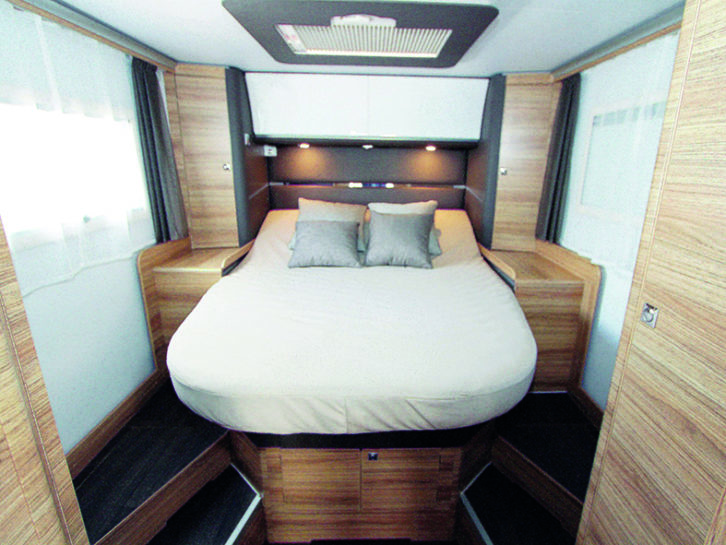
If you have children, consider how the sleeping arrangements will work, if, for example, you want to stay up later and they need to go to bed. Smaller youngsters can be moved quite easily, bigger ones can’t.
A second TV in the fixed-bed bedroom might be the solution, but it’s worth giving some thought to these potential difficulties.
French-style fixed beds (usually with a cut-off section and one of the occupants next to the wall) can cause problems if that occupant needs to get up in the night.
They are inevitably going to disturb the person they have to clamber over in the dark. This is an important consideration when you are choosing your motorhome layout.
Carbon monoxide (CO) is an invisible killer, so it’s advisable to always leave some form of ventilation ajar, even during colder weather. That might be a roof vent or a window.
CO detectors/alarms have been obligatory in motorhomes sent for NCC certification since 1 September 2011, so all new models should be fitted with a Type B CO alarm that complies with BS EN 50291.
If you buy a used motor caravan, bear in mind that CO alarms have a typical lifespan of five to seven years, so yours might well need replacing.
Likewise, you should also change the batteries in the alarm every six months, and check that the unit is tested as part of your annual service.
Bed options and sizes
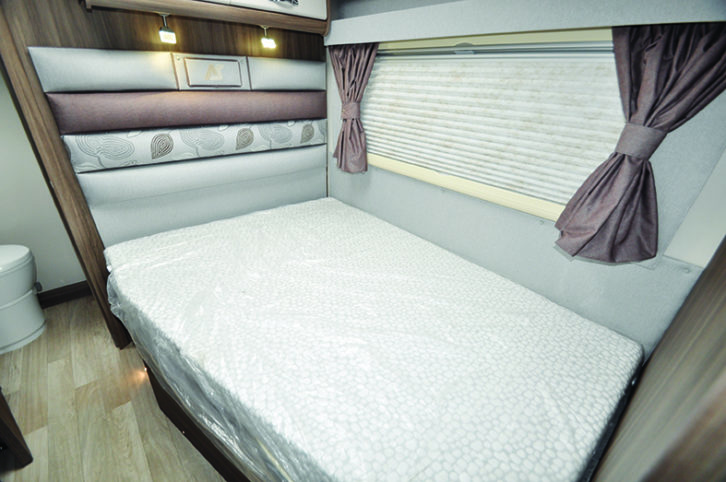
There are dozens of possible sleeping options in a family-sized motorhome, so it’s worthwhile taking the time to find the right one for you.
Make-up double beds in the lounge tend to be very large and reasonably comfortable. However, unless you’re touring in hot weather and can live outside until bedtime, and can therefore leave the front bed up all day, you’ll need to build the bed each night. If that doesn’t appeal, you’ll want to opt for a permanent bed instead.
The other benefit of fixed beds is that they usually have bespoke mattresses made from high-quality memory foam, whereas in converted sofas, the base cushions tend to be sprung or made with standard foam.
Purpose-built fixed single beds will also benefit from having mattresses with better foam construction.
Children’s bunk beds and make-up beds, and bunks in dinette areas, will generally use a standard foam.
Bed size can be important, and many French-style fixed double beds have significant corner cut-offs to allow for easier access to the washroom. These angled cut-offs do limit your sleeping space, so be sure to check that it’s not going to be a problem before you buy.
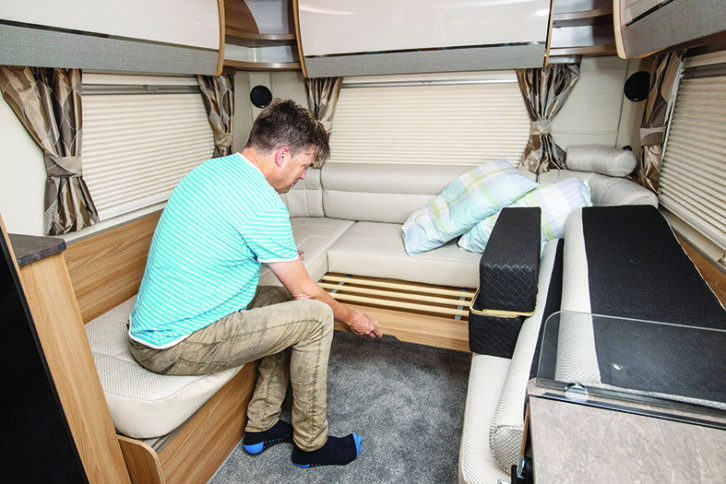
What might be a problem is the fixed longitudinal island beds that can be tightly sandwiched between a central washroom and the back wall. These often only measure 5ft 10in, so won’t allow taller people to stretch out.
In fact, if you are over 5ft 7in or so, you might find them a bit restrictive.
The wider your ‘van’s interior, the larger the bed the manufacturer’s can fit as standard which can be a boon for motorcaravnners. Just remember that the sheets and bedding will likely need to be oversized, too.
Replacement mattresses
Some after-market bedding manufacturers will have the exact mattress measurements for your motorhome’s bed on file, and keep a suitable replacement in stock.
However, it’s more likely to be the case that you’ll have to measure your existing mattress and sketch it out, or fill in an online template. Take a look at company websites to find out which approach they might use.
Upgrading the base sections for the make-up bed in the lounge is trickier.
Check that the covers of the lounge’s sofa base and back cushions are easily removable, and measure the length, width and depth of the foam filler inside not the entire cushion.
Of course, you’ll only need to replace the foam inserts of the cushions that make up the bed base.
Many mattress makers offer a custom service, cutting foams to any size and shape. This isn’t cheap: a good mattress for your ‘van could easily cost over £400, so it’s a major investment.
Linthorpe Beds is a good example of the services on offer, although several firms, such as those listed below, offer similar products, where every mattress is made to measure.
Replacement mattresses can be made in any size or shape you might require, in foam or memory foam, with open coil springs or pocket sprung. Always remember to ask about warranties and the delivery costs.
If you can’t obtain a replacement mattress from your motorhome manufacturer, or you want to explore price options, these are just a few of the specialist firms in the market who might be able to help:
Boring snoring
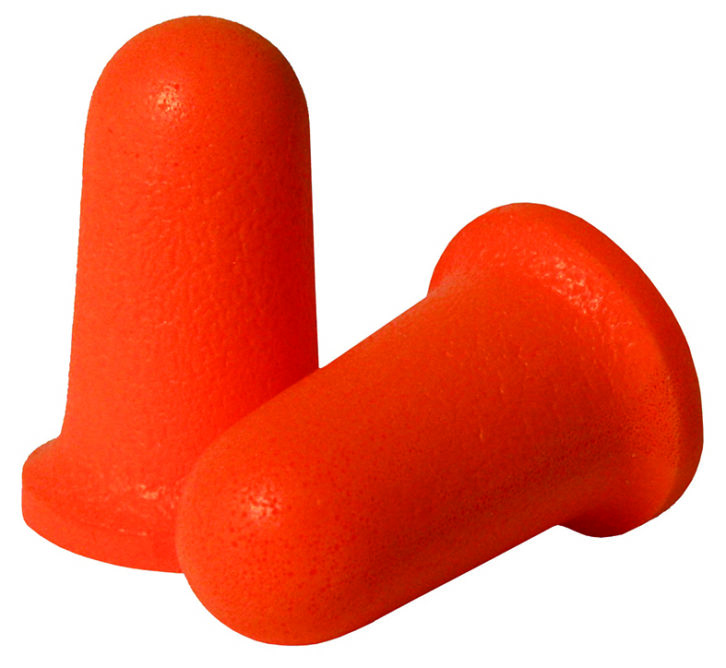
My memories of early 1970s holidays are somewhat blighted by my dad’s snoring – a noise that could make the ‘van windows shake, and sounded as though he was trying to kickstart a stubborn two-stroke motorcycle (every 10 seconds).
Snoring is a complicated matter, which is not helped nay drinking too much alcohol, consuming a large meal too close to bedtime or not adopting a good position for sleeping.
To minimise snoring, it’s best to sleep on the left side, and to stretch out straight (with a pillow between your needs to stop you rolling over).
Keep your head well supported at a natural angle, neither propped up nor drooping down. Your next should always remain in line with your spine.
A blocked nose can commonly cause snoring. Whether you’re a hay fever sufferer or not, rhinitis (inflammation of the nasal membranes) can affect you. Nasal rinses are widely available to flush out the day’s debris, and you could also try beclomethasone spray, an over-the-counter medicine that reduces levels of inflamaation. Ask your pharmacist for advice.
Earplugs
Earplugs are a great option for blocking out noise and aiding better sleep. The cheapest are disposable, foam earplugs, widely available in DIY shops, pharmacies and online. You might also consider more sophisticated in-ear plugs designed for industrial use.
If you liked this… READ THESE:
20 essential accessories to take on tour
How to revamp your motorhome’s furnishing fabrics
If you’ve enjoyed reading this article, why not get the latest news, reviews and features delivered direct to your door or inbox every month. Take advantage of our brilliant Practical Motorhome magazine SUBSCRIBERS’ OFFER and SIGN UP TO OUR NEWSLETTER for regular weekly updates on all things motorhome related.
Future Publishing Limited, the publisher of practicalcaravan.com, provides the information in this article in good faith and makes no representation as to its completeness or accuracy. Individuals carrying out the instructions do so at their own risk and must exercise their independent judgement in determining the appropriateness of the advice to their circumstances. Individuals should take appropriate safety precautions and be aware of the risk of electrocution when dealing with electrical products. To the fullest extent permitted by law, neither Future nor its employees or agents shall have any liability in connection with the use of this information. You should check that any van warranty will not be affected before proceeding with DIY projects.
One of the major factors (the most important?) in choosing a motorhome should be that the sleeping arrangements are well suited to you and your family
